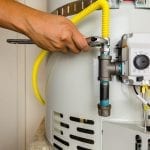Maintaining Your Home's Hot Water System: Essential Guidelines
Maintaining Your Home's Hot Water System: Essential Guidelines
Blog Article
On this page further down you might get a lot of helpful points in regards to How to Maintain Your Water Heater & Prolong its Life.

Warm water is vital for day-to-day convenience, whether it's for a rejuvenating shower or cleaning meals. To ensure your hot water system runs effectively and lasts much longer, routine maintenance is vital. This short article provides sensible pointers and insights on how to maintain your home's hot water system to avoid disturbances and expensive repair work.
Intro
Keeping your home's hot water system might appear daunting, yet with a few straightforward steps, you can ensure it operates efficiently for years ahead. This overview covers everything from comprehending your hot water system to DIY maintenance suggestions and understanding when to hire professional aid.
Significance of Keeping Your Hot Water System
Regular upkeep not only prolongs the life expectancy of your hot water system however likewise ensures it runs effectively. Disregarding upkeep can cause lowered effectiveness, higher power costs, and also early failure of the system.
Signs Your Warm Water System Demands Maintenance
Recognizing when your hot water system requires attention can stop major problems. Look out for signs such as inconsistent water temperature level, weird noises from the heating unit, or rustic water.
Recognizing Your Hot Water System
Prior to diving right into maintenance tasks, it's helpful to comprehend the standard components of your warm water system. Typically, this consists of the water heater itself, pipelines, anode rods, and temperature level controls.
Month-to-month Maintenance Tasks
Regular monthly checks can aid capture minor concerns before they escalate.
Flushing the Hot Water Heater
Purging your water heater eliminates debris accumulation, improving efficiency and lengthening its life.
Checking and Changing Anode Rods
Anode rods protect against rust inside the container. Checking and changing them when worn is crucial.
Inspecting and Adjusting Temperature Setups
Changing the temperature level setups guarantees optimal efficiency and safety and security.
DIY Tips for Maintenance
You can execute numerous maintenance tasks on your own to keep your hot water system in top condition.
Looking for Leakages
Routinely inspect pipes and connections for leaks, as these can lead to water damages and greater bills.
Testing Pressure Alleviation Valves
Examining the stress relief valve guarantees it operates correctly and protects against excessive pressure build-up.
Protecting Pipelines
Shielding hot water pipes lowers warmth loss and can conserve energy.
When to Call a Professional
While do it yourself upkeep is useful, some issues need specialist competence.
Complicated Concerns Requiring Professional Help
Instances consist of significant leakages, electrical problems, or if your hot water heater is consistently underperforming.
Regular Professional Upkeep Conveniences
Specialist maintenance can consist of detailed examinations, tune-ups, and ensuring compliance with security standards.
Conclusion
Routine upkeep of your home's hot water system is vital for performance, durability, and expense savings. By complying with these pointers and understanding when to look for expert help, you can ensure a reputable supply of hot water without unexpected disruptions.
How to Maintain an Instant Hot Water Heater
Before tinkering with your hot water heater, make sure that it’s not powered on. You also have to turn off the main circuit breaker and shut off the main gas line to prevent accidents. Also turn off the water valves connected to your unit to prevent water from flowing into and out of the appliance. 2. When you’re done, you have to detach the purge valves’ caps. These look like the letter “T†and are situated on either side of the water valves. Doing so will release any pressure that has accumulated inside the valves while at the same time avoid hot water from shooting out and burning your skin. 3. When the purge valves’ caps are removed, you have to connect your hosing lines to the valves. Your unit should have come with three hoses but if it didn’t, you can purchase these things from any hardware or home repair shops. You can also get them from retail stores that sell water heating systems. Read the user’s manual and follow it to complete this task properly. When the hosing lines are connected, open the purge port’s valves. 4. You should never use harsh chemical cleaners or solutions when cleaning your unit. Make use of white vinegar instead. It should be undiluted and you’ll probably use about 2 gallons. 5. Now flush your water heater. This task should probably take about 40 minutes. We can’t give you specific directions for this because the procedure is carried out depending on the type, model and brand of your heater. With that being said, refer to the user’s manual. 6. When you’re done draining the unit, you have to turn off the purge port valves again. Remove the hosing lines that you earlier installed on each of the water valves. Put the valve caps (purge port) back in their respective places and be very careful so as not to damage the rubber discs that are found inside these caps. 7. Now that everything’s back in place, check your user’s manual again to find out how to reactivate your water heating system. 8. Once it is working, turn one of your hot water faucets on just to let air pass through the heater’s water supply pipes. Leave the tap on until water flows smoothly out of it. https://www.orrplumbing.com/blog/2014/september/how-to-maintain-an-instant-hot-water-heater/

I came across that blog post about What Kind of Maintenance Do Water Heaters Need? while surfing the web. Do you know another person who is sincerely interested in the subject? Feel free to promote it. Bless you for your time. Come back soon.
Click Here Report this page